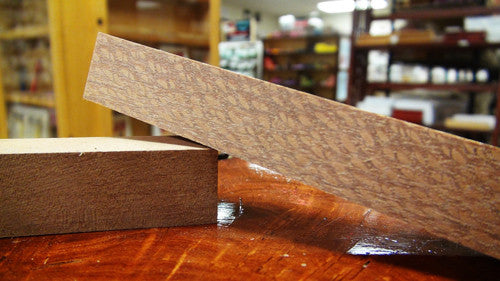
Lacewood Leopard
$3.00
SKU
Has a very conspicuous flecking that gives this wood its namesake. The
wood itself is a medium to dark reddish brown with grey or light brown
rays, which resemble the spots of a leopard. Like other woods that
exhibit the strongest figure in quartersawn pieces, (such as Sycamore),
Leopardwood has the most pronounced figure and displays the largest
flecks when perfectly quartersawn; this is due to the wood's wide medullary rays, whose layout can be seen the clearest when looking at the endgrain.
Leopardwood is frequently confused
with Lacewood, and is sometimes referred to as such. In its vaguest
sense, the term "lacewood" is used to describe any wood that displays
figuring that resembles lace, (which would technically include
Leopardwood). Attempts to identify a specific board macroscopically may
be difficult. Two Australian species, Northern Silky Oak (Cardwellia sublimis), and Southern Silky Oak (Grevillea robusta) can both look very similar, and are sometimes sold as Australian Lacewood.
Leopardwood (Roupala spp.) can usually be separated from most species of Lacewood (Panopsis spp.) based upon its darker color and higher density. Additionally, when comparing the endgrain of these two genera, Leopardwood has wider spaced parenchyma bands: approximately 3-4 per mm versus 5-6 per mm with Lacewood.
